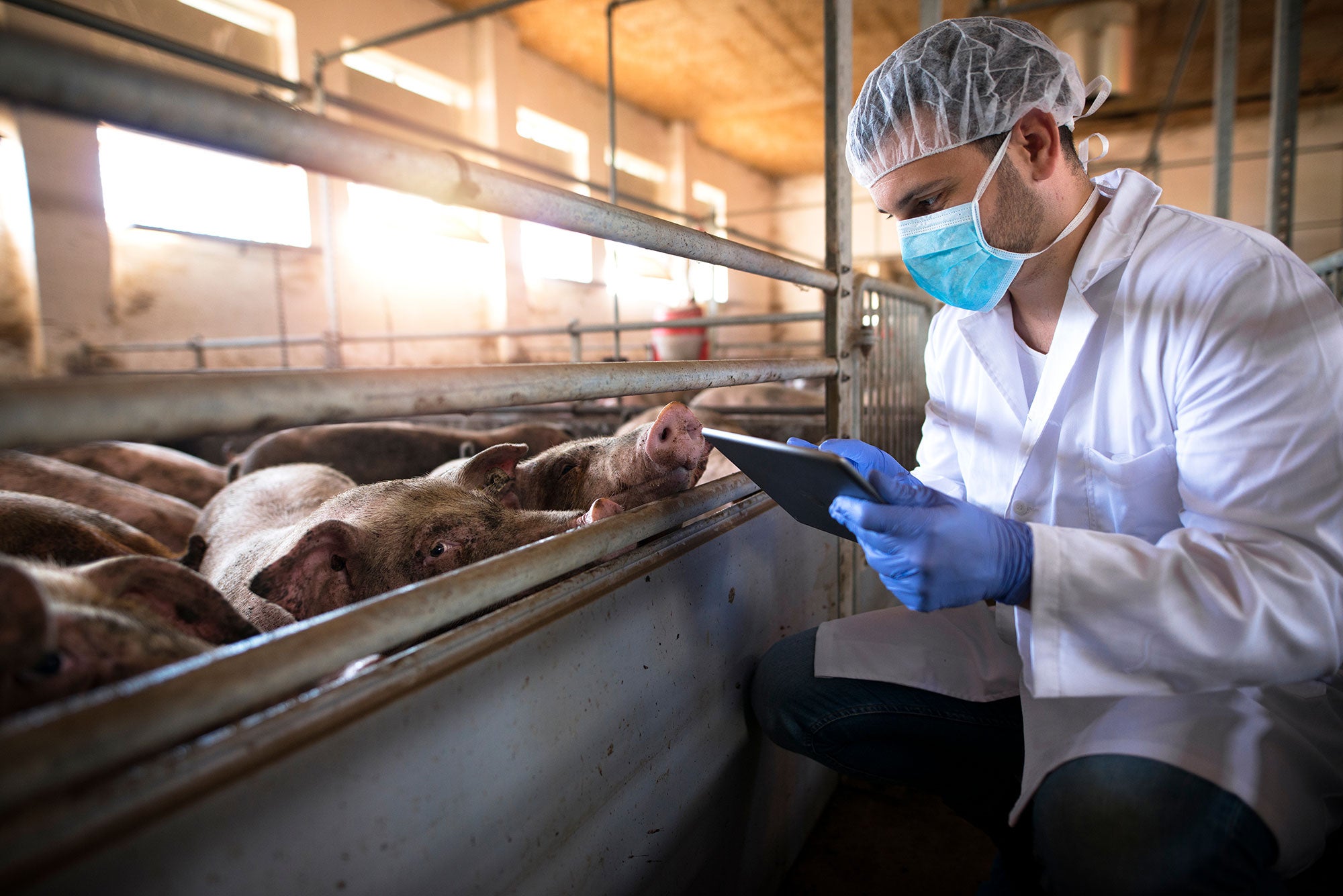A study from North Carolina State University has looked at reducing between-farm infections by modeling a new way of routing the trucks that transport feed and livestock between pig farms and from farms to market. The rerouting system showed that even without effective truck cleaning and disinfection, it reduced up to 42 percent of the contacts between infected and uninfected farms via vehicle movements.
“Currently, vehicles used to transport feed or pigs are dispatched from a call center, and based on weekly schedules,” said Gustavo Machado, assistant professor of population health and pathobiology at NC State and corresponding author of the work. “But we wanted to see if changing the way that trucks are routed between farms could be a good way to prevent the spread of diseases that are extremely costly to farmers, such as porcine epidemic diarrhea virus and porcine respiratory and reproductive syndrome virus.”
Machado and his team used data from 1,609 commercial swine farms, which included the number of animals and GPS data from the trucks traveling between farms, as well as data from enhanced on-farm Secure Pork Supply biosecurity plans hosted in the Rapid Access Biosecurity RABapp, which is a national initiative aimed at preventing the spread of pathogens between swine farms.
The data gave the researchers information about which farms had an illness outbreak, as well as when vehicles were traveling to cleaning and disinfection stations. They put the data into a computer model that looked at different variables for each vehicle, such as vehicle status, shipment delay, disease risk, C&D, and whether the vehicle was traveling between different farms.

The model produced a vehicle scoring system that ranked each vehicle from 1 to 19.
For example, a vehicle with inactive or busy-maintenance status was grouped in score level 1. Conversely, an active vehicle that could complete the delivery within a predefined number of minutes, was cleaned after the most recent shipment, and wasn’t traveling to farms with a current outbreak or between different farm communities, thereby reducing contamination risk, scored a 19.
The model rerouted trucks based on the ranking system to both keep vehicles that were serving farms with outbreaks from traveling to other communities and to maximize C&D when the vehicles had to move between different communities.
“The one piece of the puzzle that we don’t have is exactly how effective C&D is; therefore, more work needs to be done to collect such data under field conditions,” Machado said. “However, even if we assume that the C&D is largely ineffective, the rerouting model still shows a 42 percent reduction in contacts between infected and uninfected farms, which should translate into a big reduction in pathogen spread.
“We also have to recognize that there are drawbacks to this method, specifically in increased costs due to more frequent C&D stops, which increases overall distance traveled and wear and tear on vehicles,” Machado added. “Our next steps will be to look at the actual costs of rerouting as well as the effectiveness of cleaning and disinfection.”
The study appears in Preventive Veterinary Medicine and is supported by the Swine Health Information Center.


:max_bytes(150000):strip_icc()/100904390_beef_cattle-5688655fc8bf469493b453816b3075bf.jpg)
:max_bytes(150000):strip_icc()/BryanJorgensesn-HowtoSelectBetterSeedVarieties-R5A_7313-025_corn-0f6e1cf684454c75bd92722e97d50f5e.jpg)
:max_bytes(150000):strip_icc()/ProblemArtOCT25-a6e1fd0823ff4e1f8d8912ef07a53800.jpeg)


:max_bytes(150000):strip_icc()/ProblemArt-Aug25-355d10643dc54a2bb9e1584f01a4e575.jpeg)
:max_bytes(150000):strip_icc()/101084648_preview-de4749472f174d74b6c39986c8be28d0.jpg)
:max_bytes(150000):strip_icc()/Jon-Kinzenbaw-Jessie-Scottcopy-92cf55b729d445339f4b7189afd6874e.jpg)